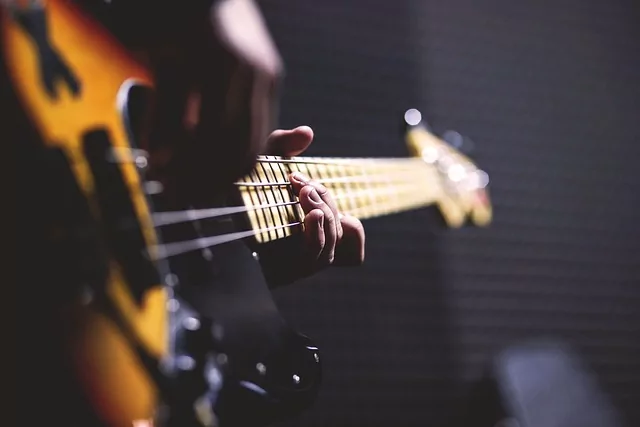Contents
Avoid Mistakes With The Help Of Real Practice Student Videos!
In online courses, you just get to see how playing the guitar works. This course will also teach you what does not work. You get to see what mistakes occur again and again (patterns) in online guitar lessons. Videos of guitar students show you the mistakes you should avoid from the very beginning.
Introduction
The electric guitar, an iconic and groundbreaking musical instrument, has shaped the sound of modern music. From humble beginnings in the early twentieth century to cutting-edge advancements today, the evolution of the electric guitar has been a fascinating journey that has left an everlasting influence on popular culture. In this essay, we’ll look at the significant milestones and advances that have helped to elevate the electric guitar to the status of a symbol of artistic expression and cultural identity.

The Birth of the Electric Guitar
The electric guitar’s history may be traced back to the 1920s and 1930s when inventors and performers experimented with ways to augment the sound of traditional acoustic guitars. The first electric guitars were built by pioneers such as George Beauchamp and Adolph Rickenbacker, who used electromagnetic pickups to translate string vibrations into electrical signals. Their efforts culminated in Rickenbacker Electro’s debut of the “Frying Pan” electric lap steel guitar in 1931, which lay the framework for future advances.
The Rise of Solid-Body Guitars
The solid-body electric guitar, which would revolutionize the instrument’s capabilities, first appeared in the 1940s. Leo Fender, a music visionary, produced the breakthrough Fender Esquire and Broadcaster (later renamed Telecaster) models in 1950. These guitars had a solid body made of ash or alder and a single cutaway construction, and they had a cleaner and more sustain-rich sound than their hollow-body counterparts. Shortly after, in 1954, Fender introduced the legendary Stratocaster, which featured three pickups and a sleek double-cutaway body, solidifying its status as one of the most influential guitars in history.
Gibson, another iconic guitar manufacturer, released the Les Paul solid-body model in 1952. The Les Paul, with its mahogany body and dual humbucker pickups, had a warm and powerful tone that was popular among blues and rock players. In the 1950s and beyond, the rivalry between Fender and Gibson fuelled a wave of innovation, ushering in a golden era for the electric guitar.
The Golden Age of Rock ‘n’ Roll and Beyond
The 1960s and 1970s were the golden years of rock ‘n’ roll, and the electric guitar’s popularity skyrocketed. Iconic guitarists such as Jimi Hendrix, Eric Clapton, and Jimmy Page pushed the frontiers of the instrument’s versatility in the blues, psychedelic, and hard rock genres. The introduction of distortion and effects pedals expanded the sound of the electric guitar, forever altering the landscape of rock music.
The Modern Era: Advancements and Diversification
Advances in technology and guitarists’ creative energy continued to drive the growth of the electric guitar in the later part of the twentieth century and into the twenty-first century. The rise of heavy metal and shredding guitar solos in the 1980s led manufacturers to create guitars with quicker necks and hotter pickups to meet the expectations of virtuoso performers.
Furthermore, advances in digital technology resulted in the introduction of modeling amplifiers and digital effects processors, which provided guitarists with an unprecedented choice of tones and sounds. These advancements democratized access to diverse guitar effects, which were previously restricted for studio recording, allowing musicians of all skill levels to experiment and create distinctive sonic landscapes.
Conclusion
The growth of the electric guitar from a simple experiment in amplification to a global cultural icon has been breathtaking. Its influence on popular music is immeasurable, as it became the voice of resistance, emotion, and talent for infinite generations of musicians and fans.
The electric guitar remains a symbol of innovation and artistic expression as technology advances and creative minds push the boundaries of what is possible. Whether performed in a bedroom or on a vast stage in front of thousands, the electric guitar continues to enchant audiences around the world, forever interwoven with the spirit of rock ‘n’ roll and the ever-changing landscape of music.
Avoid Mistakes With The Help Of Real Practice Student Videos!
In online courses, you just get to see how playing the guitar works. This course will also teach you what does not work. You get to see what mistakes occur again and again (patterns) in online guitar lessons. Videos of guitar students show you the mistakes you should avoid from the very beginning.
